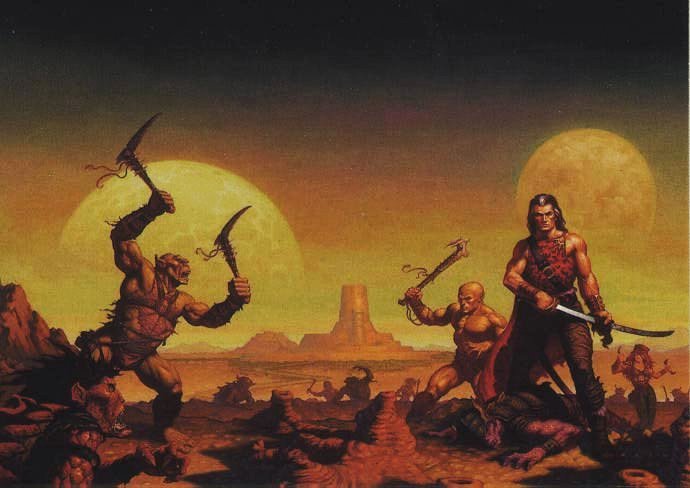A friend of mine on Facebook asked a question of all her friends who play D&D. She asked: "How do you determine damage of other materials such as stone or wood, do you base it on hardness?"
Many people responded with some math based responses, but mine was quite simple: Look to Dark Sun.
http://dungeonsmaster.com/wp-content/uploads/2010/11/brom-03.jpg
Dark Sun, being a metal scarce setting, has a lot of stone and bone weaponry. It's basically Mad Max meets D&D, which actually sounds pretty damn epic if you ask me. Epicness aside, any way to find out if the work has been done for you already in either an official or semi-official way is miraculous. In our hyperbusy world today, if a DM can find any way to reduce the work needed to make their game, the better. It's how I DM. It can be called lazy, sure, but that's what separates us regular Joes who happen to make campaigns and such, and the geniuses who make entire games, like Monte Cook or Zak Sabbath.
The other lazy answer is that any wooden weapon could be considered a club. I'm not going to cut anything with a wooden sword, it is basically a glorified club. Wooden arrows or spears can be exempt from this, since they can go stabby-stabby. This is why pages during the medieval era, or anyone starting out in weapons training, usually starts with wood. You're not going to slice someone's guts open with a wooden knife. That is not how it works.
And yet does surprising amounts of damage to Zombies. Wouldn't use it against Skeletons... or Creepers
http://vignette1.wikia.nocookie.net/minecraftpocketedition/images/f/fd/Wooden_sword.png/revision/latest?cb=20140927052946
Some materials act like the iron/steel weapons that are printed in the main rulebooks. Obsidian daggers, spears, and arrowtips can slice as effectively as steel, and bronze weaponry are as battle worthy as iron. However, both obsidian and bronze tend to break easier, and are why they are considered lower quality. A common rule on this usually turns a critical fumble into structural failure of the weapon, with a second critical fumble breaking the weapon entirely. However, a Bronze Age campaign can entirely side-step this by making the iron weapons the equivalent of bronze and turn iron or steel into magical weaponry. That is how I rule it in my Sword-and-Sandals setting.
Ultimately, as any of my DM/GM advice goes, the ultimate determination on how such weaponry works is up to you. You are the maker of your own setting. However you wish to rule wooden/stone/bronze/etc. weapons is ultimately up to you. Happy gaming!


No comments:
Post a Comment